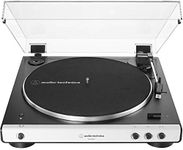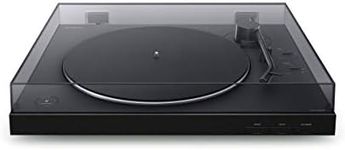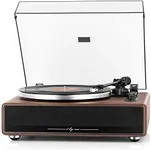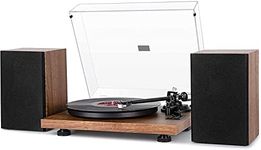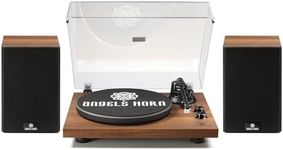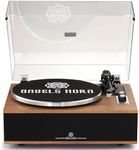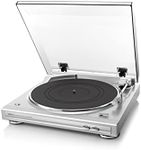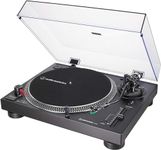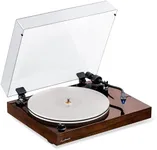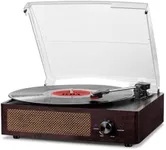Buying Guide for the Best Turntable Record Players
Choosing the right turntable record player can greatly enhance your music listening experience. It's important to consider various specifications that affect sound quality, ease of use, and compatibility with your existing audio setup. Understanding these key features will help you select a turntable that meets your needs and preferences, whether you're a casual listener or an audiophile.Drive TypeThe drive type of a turntable refers to how the platter is powered. There are two main types: belt drive and direct drive. Belt drive turntables use an elastic belt to spin the platter, which helps reduce motor noise and vibration, making them ideal for audiophiles seeking high sound quality. Direct drive turntables have the motor directly connected to the platter, offering more consistent speed and durability, which is preferred by DJs for scratching and mixing. If you're focused on sound quality for home listening, a belt drive might be best. If you plan to use the turntable for DJing or need quick start-up times, consider a direct drive.
Cartridge TypeThe cartridge is the component that holds the needle or stylus, which reads the grooves of the record. There are two main types: moving magnet (MM) and moving coil (MC). MM cartridges are more common, easier to replace, and generally more affordable, making them suitable for most users. MC cartridges can offer superior sound quality but are typically more expensive and require a compatible phono preamp. If you're new to vinyl or want a straightforward setup, an MM cartridge is a good choice. If you're an experienced listener seeking the best sound quality, you might consider an MC cartridge.
Speed SettingsTurntables typically support different speed settings, measured in revolutions per minute (RPM), to accommodate various types of records. The most common speeds are 33 1/3 RPM for LPs and 45 RPM for singles. Some turntables also support 78 RPM for older shellac records. It's important to choose a turntable that supports the speeds of the records you own or plan to purchase. If you have a diverse collection, ensure your turntable can handle all necessary speeds. For most modern collections, 33 1/3 and 45 RPM will suffice.
Phono PreampA phono preamp amplifies the signal from the turntable to a level that can be processed by your audio system. Some turntables come with a built-in preamp, which simplifies setup and is convenient for connecting directly to speakers or amplifiers without a dedicated phono input. If your audio system lacks a phono input, a built-in preamp can be very useful. However, if you have a high-quality external preamp or a receiver with a phono input, you might prefer a turntable without a built-in preamp for potentially better sound quality.
Platter MaterialThe platter is the part of the turntable that the record sits on, and its material can affect sound quality. Common materials include plastic, aluminum, and acrylic. Plastic platters are lightweight and affordable but may not provide the best sound isolation. Aluminum platters offer better stability and sound quality, while acrylic platters are often used in higher-end models for their excellent vibration damping properties. If you're looking for a basic setup, a plastic or aluminum platter may suffice. For improved sound quality, consider a turntable with an acrylic platter.
Tonearm TypeThe tonearm holds the cartridge and stylus and guides them across the record. There are straight and S-shaped tonearms, each with its own benefits. Straight tonearms are often lighter and can provide more accurate tracking, which is beneficial for sound quality. S-shaped tonearms are more robust and are often preferred by DJs for their durability and ease of use. If you're focused on sound quality for home listening, a straight tonearm might be preferable. If you need a more durable option for DJing, consider an S-shaped tonearm.
